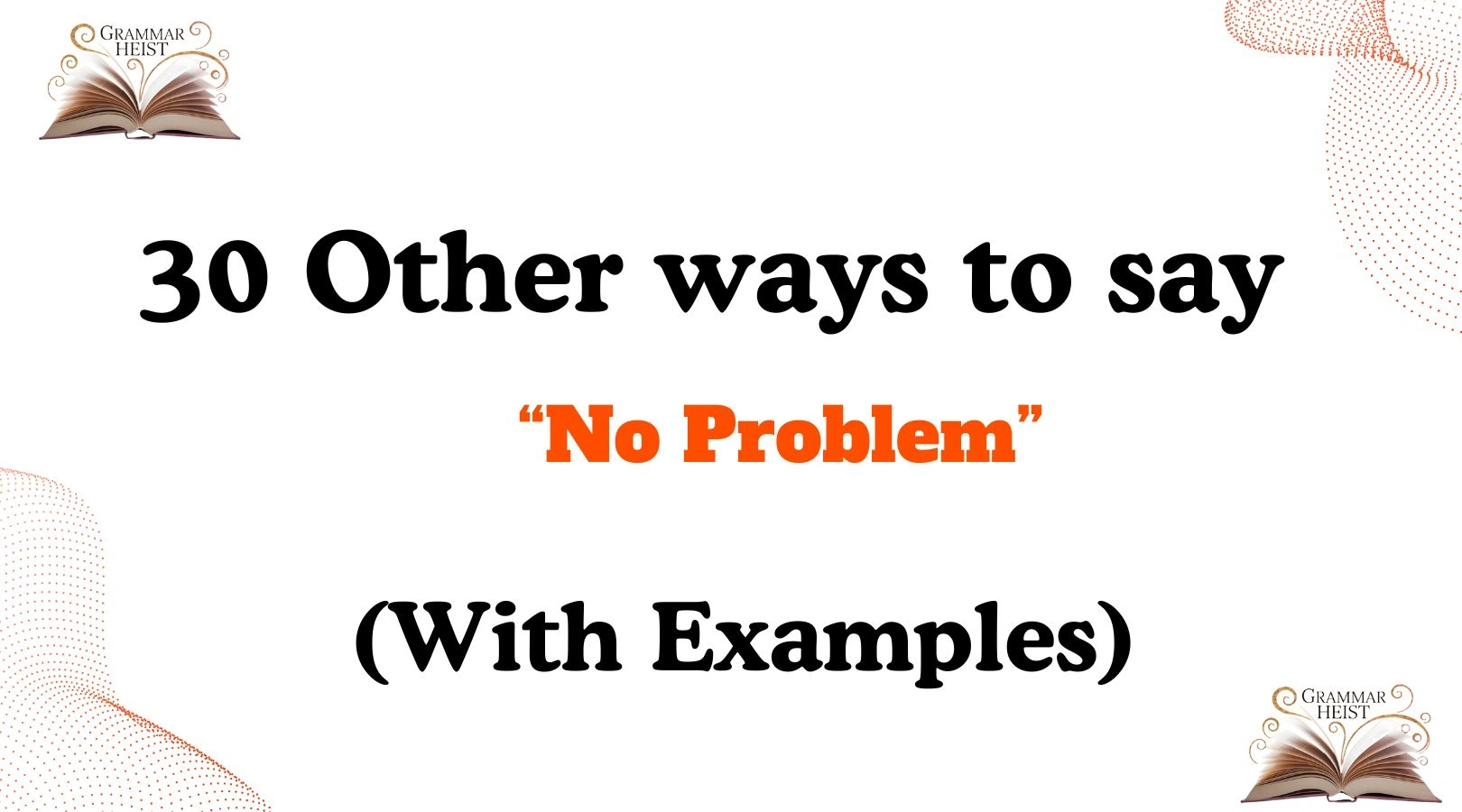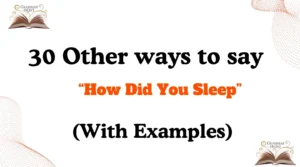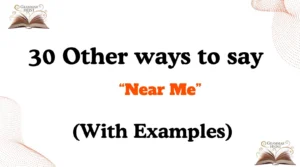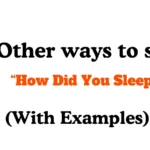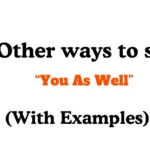Finding the right words to express care, understanding, and gratitude can make your communication feel more genuine and personal. While “no problem” is friendly and casual, sometimes we want to express the same meaning in a warmer, more thoughtful, or even more professional way. That’s why learning other ways to say “no problem” helps you sound kind, respectful, and considerate in every situation — whether you’re texting a friend, replying to a coworker, or comforting someone.
What Does “No Problem” Mean?
The phrase “no problem” is a casual way of saying “you’re welcome” or “it’s okay” after someone thanks you or apologizes. It shows that what the person did was not an inconvenience, and you’re happy to help.
It’s often used in everyday conversations — like when someone says “thank you,” and you reply “no problem,” meaning “it was nothing” or “don’t worry about it.”
Is It Professional or Polite to Say “No Problem”?
Saying “no problem” is polite in most informal situations, but in professional or formal settings, it might sound too casual. For example, replying to your boss’s “thank you” with “no problem” can sound informal compared to saying “my pleasure” or “happy to help.”
It’s always good to match your tone with the situation — friendly for casual chats, and more polished for business communication.
Pros or Cons of Saying “No Problem”
Pros:
- Friendly and approachable tone
- Easy and quick to say
- Shows you’re not bothered by the favor
Cons:
- Can sound too casual in formal situations
- May come across as dismissive to some people
- Doesn’t always convey warmth or appreciation
Synonyms For No Problem
- You’re Welcome
- My Pleasure
- Don’t Mention It
- Anytime
- No Worries
- It’s All Good
- Happy to Help
- Not a Problem at All
- It Was Nothing
- Of Course
- Absolutely
- Sure Thing
- You Got It
- All Good
- No Big Deal
- Don’t Worry About It
- Glad to Help
- Anytime, Happy To
- No Trouble
- It’s Nothing
- You Bet
- Not at All
- It’s Fine
- Think Nothing of It
- That’s Okay
- All Right
- No Need to Thank Me
- It’s My Duty
- Always Here for You
- You’re All Good
1. You’re Welcome
Scenario: When someone thanks you genuinely.
Examples:
- “You’re welcome! I’m glad I could help.”
- “You’re welcome, anytime.”
- “You’re welcome — happy to assist.”
Tone: Warm and polite.
Explanation: A timeless and polite response suitable for both formal and informal settings.
2. My Pleasure
Scenario: After helping someone and you truly enjoyed doing it.
Examples:
- “My pleasure! I’m always here for you.”
- “It was my pleasure to help.”
- “My pleasure — I’m happy it worked out.”
Tone: Gracious and sincere.
Explanation: Sounds professional and heartfelt; often used in customer service and formal communication.
3. Don’t Mention It
Scenario: When you want to downplay your effort.
Examples:
- “Don’t mention it, it was nothing.”
- “Oh, don’t mention it — happy to help.”
- “Don’t mention it, anytime!”
Tone: Humble and casual.
Explanation: Makes the person feel comfortable and not indebted.
4. Anytime
Scenario: When you want to show you’re always available to help.
Examples:
- “Anytime! You can count on me.”
- “Sure, anytime.”
- “Of course — anytime you need.”
Tone: Friendly and reassuring.
Explanation: Perfect for friends, coworkers, or clients when you want to sound supportive.
5. No Worries
Scenario: When someone apologizes or thanks you casually.
Examples:
- “No worries, it’s all good.”
- “No worries, I got you.”
- “No worries, happy to help.”
Tone: Relaxed and casual.
Explanation: Great for informal conversations; it shows calm and understanding.
6. It’s All Good
Scenario: When someone is feeling sorry or embarrassed.
Examples:
- “It’s all good, don’t stress.”
- “It’s all good, really.”
- “It’s all good — no harm done.”
Tone: Reassuring and easygoing.
Explanation: Helps ease tension and make others feel comfortable.
7. Happy to Help
Scenario: When you genuinely enjoy assisting others.
Examples:
- “Happy to help anytime.”
- “I’m happy to help — that’s what I’m here for.”
- “Always happy to help!”
Tone: Positive and friendly.
Explanation: Great for both professional and casual use; conveys willingness and kindness.
8. Not a Problem at All
Scenario: When you want to sound polite but natural.
Examples:
- “Not a problem at all!”
- “Oh, that’s not a problem at all.”
- “Really, not a problem.”
Tone: Gentle and considerate.
Explanation: A slightly more polite version of “no problem.”
9. It Was Nothing
Scenario: When you want to be humble about your help.
Examples:
- “It was nothing, really.”
- “It was nothing, glad I could help.”
- “It was nothing at all.”
Tone: Modest and kind.
Explanation: Makes others feel comfortable and appreciated.
10. Of Course
Scenario: When you want to show willingness and care.
Examples:
- “Of course! Anytime.”
- “Of course, happy to help.”
- “Of course, no problem.”
Tone: Friendly and reassuring.
Explanation: Sounds natural and caring — shows readiness to help.
11. Absolutely
Scenario: When you want to sound enthusiastic and confident.
Examples:
- “Absolutely, I’d love to help.”
- “Absolutely! No problem.”
- “Absolutely, it’s all good.”
Tone: Energetic and positive.
Explanation: Works well in both personal and professional exchanges.
12. Sure Thing
Scenario: Casual, lighthearted response.
Examples:
- “Sure thing!”
- “Sure thing, no worries.”
- “Sure thing, happy to help.”
Tone: Relaxed and friendly.
Explanation: Great for informal settings — quick and cheerful.
13. You Got It
Scenario: When agreeing to do something.
Examples:
- “You got it!”
- “You got it, consider it done.”
- “You got it, happy to help.”
Tone: Upbeat and supportive.
Explanation: Shows enthusiasm and reliability.
14. All Good
Scenario: When you want to keep things light and casual.
Examples:
- “All good, no worries.”
- “All good! Glad to help.”
- “All good, don’t mention it.”
Tone: Calm and easygoing.
Explanation: Perfect for casual chats among friends or coworkers.
15. No Big Deal
Scenario: To downplay your effort or act of help.
Examples:
- “No big deal!”
- “No big deal, really.”
- “No big deal — happy to do it.”
Tone: Humble and relaxed.
Explanation: Shows you didn’t mind helping at all.
16. Don’t Worry About It
Scenario: When someone apologizes.
Examples:
- “Don’t worry about it, it’s fine.”
- “Don’t worry about it, really.”
- “Don’t worry about it — all good.”
Tone: Understanding and forgiving.
Explanation: Comforting phrase that helps calm others.
Read More:30 Other Ways to Say ‘How Did You Sleep’ (With Examples)
17. Glad to Help
Scenario: When you feel good about assisting.
Examples:
- “Glad to help anytime.”
- “Glad to help — that’s what friends are for.”
- “So glad to help you today.”
Tone: Warm and supportive.
Explanation: Communicates genuine happiness to be of service.
18. Anytime, Happy To
Scenario: After someone thanks you sincerely.
Examples:
- “Anytime, happy to!”
- “Happy to — anytime.”
- “Anytime, really.”
Tone: Friendly and caring.
Explanation: Simple yet meaningful; shows your willingness to help again.
19. No Trouble
Scenario: When you want to sound calm and polite.
Examples:
- “No trouble at all.”
- “No trouble, happy to help.”
- “No trouble, really.”
Tone: Courteous and calm.
Explanation: Slightly formal, suitable for workplace or polite settings.
20. It’s Nothing
Scenario: When you want to minimize the effort.
Examples:
- “It’s nothing, don’t mention it.”
- “It’s nothing, really.”
- “It’s nothing, happy to help.”
Tone: Modest and kind.
Explanation: A humble way to respond to gratitude.
21. You Bet
Scenario: Friendly and casual confirmation.
Examples:
- “You bet!”
- “You bet, anytime.”
- “You bet — no problem.”
Tone: Cheerful and confident.
Explanation: Expresses enthusiasm and friendliness.
22. Not at All
Scenario: When you want to sound gracious.
Examples:
- “Not at all, my pleasure.”
- “Not at all, glad to do it.”
- “Not at all, anytime.”
Tone: Polite and professional.
Explanation: Works perfectly in formal or service-related situations.
23. It’s Fine
Scenario: When someone feels bad for asking.
Examples:
- “It’s fine, really.”
- “It’s fine — happy to help.”
- “It’s fine, don’t worry.”
Tone: Reassuring and calm.
Explanation: Soothes guilt or awkwardness in casual moments.
24. Think Nothing of It
Scenario: After doing a small favor.
Examples:
- “Think nothing of it.”
- “Think nothing of it, it was easy.”
- “Think nothing of it — glad to help.”
Tone: Old-fashioned but gracious.
Explanation: Polite and humble, suitable for formal or literary tones.
25. That’s Okay
Scenario: When someone apologizes.
Examples:
- “That’s okay, don’t worry.”
- “That’s okay, it happens.”
- “That’s okay, really.”
Tone: Gentle and forgiving.
Explanation: Helps reassure the other person that everything’s fine.
26. All Right
Scenario: Informal reassurance.
Examples:
- “All right, no problem.”
- “All right, I got it.”
- “All right, happy to help.”
Tone: Casual and friendly.
Explanation: Common in daily speech; simple and comforting.
27. No Need to Thank Me
Scenario: When you want to be humble.
Examples:
- “No need to thank me.”
- “No need to thank me, I was glad to help.”
- “No need to thank me at all.”
Tone: Kind and modest.
Explanation: Keeps the tone polite and genuine.
28. It’s My Duty
Scenario: When you’re doing something expected or responsible.
Examples:
- “It’s my duty.”
- “It’s my duty, don’t mention it.”
- “It’s my duty, happy to help.”
Tone: Responsible and respectful.
Explanation: Suitable for formal or professional environments.
29. Always Here for You
Scenario: When comforting a friend or loved one.
Examples:
- “Always here for you.”
- “I’m always here for you, no problem.”
- “Always here when you need me.”
Tone: Warm and supportive.
Explanation: Adds emotional depth; shows loyalty and care.
30. You’re All Good
Scenario: When someone apologizes lightly.
Examples:
- “You’re all good!”
- “You’re all good, don’t worry.”
- “You’re all good, really.”
Tone: Relaxed and friendly.
Explanation: Great for casual situations — reassuring and chill.
Conclusion
In conversations, a simple phrase like “no problem” can mean a lot — but having different ways to say it lets you express kindness, gratitude, and professionalism in every context. Whether you’re responding to thanks or easing someone’s worries, these alternatives help you sound thoughtful, warm, and genuine.

Emma Rose is a dedicated writing expert with a passion for helping others enhance their communication skills. With a strong background in grammar, language structure, and style, Emma empowers individuals to write with clarity, confidence, and impact. Her approach combines a keen attention to detail with a supportive, personalized touch, ensuring each person she works with improves and grows in their writing journey.
